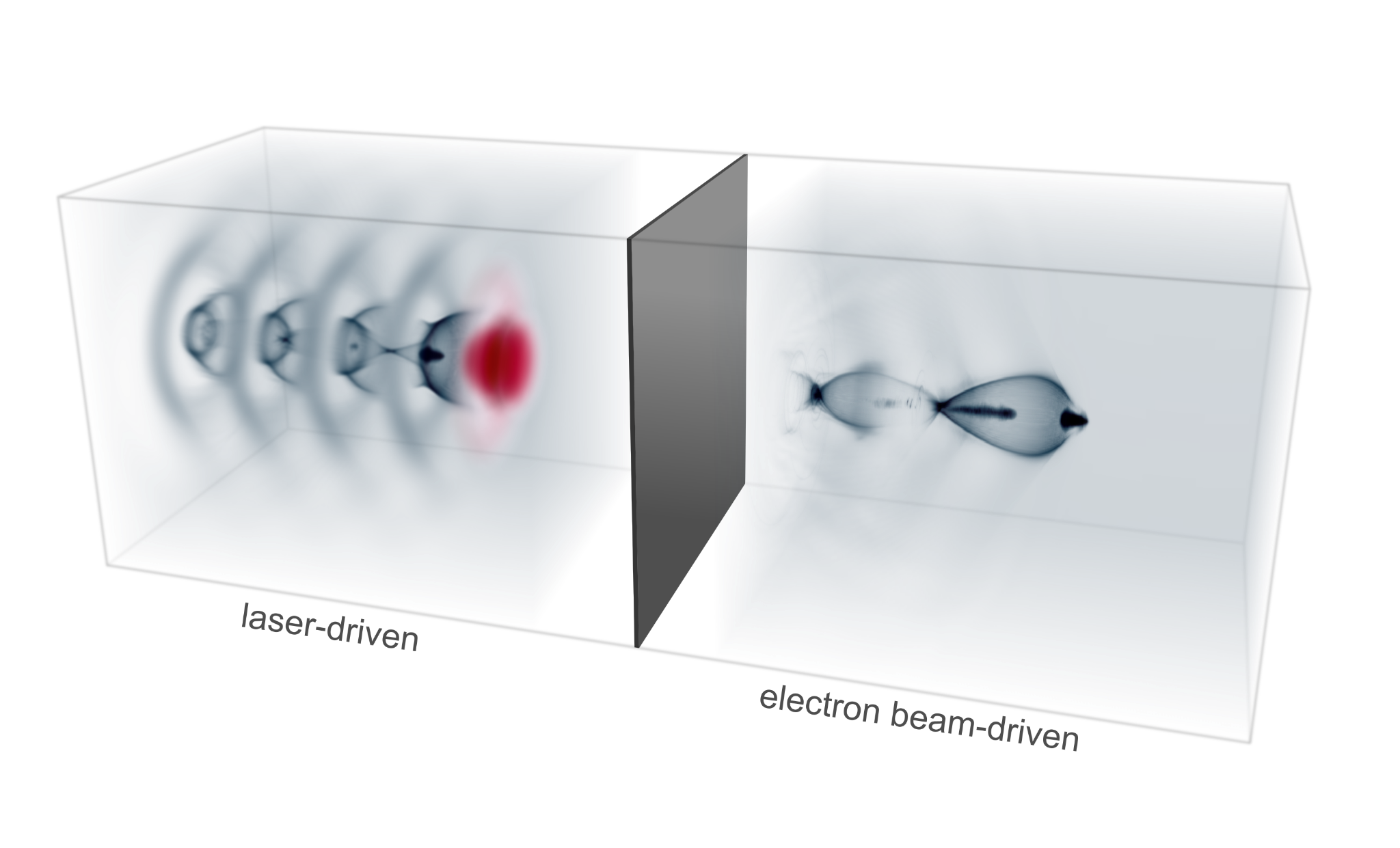Wakefield accelerators capable of creating accelerating gradients of tens of gigavolts per meter have been proposed as a cost-efficient alternative to conventional radio frequency-based particle accelerators. By overcoming the technical limitations of RF cavities, which restrict the accelerating gradients to a few megavolts per meter, wakefield accelerators can generate high-energy electron beams in a much smaller distance, resulting in more compact machines.
In so-called laser wakefield accelerators (LWFA), the plasma wave is driven by an intense laser pulse. Electrons can be injected into these plasma waves and then ‘surf’ on the plasma waves until they become out of phase with the wave. This scenario limits the quality, and rapid energy gain, of injected electrons.
Using an intense electron beam as driver of a plasma wave, an approach known as PWFA, in contrast, generates a plasma wave which injected electrons can surf without dephasing.
The promise of smaller, potentially cheaper electron accelerators, opens up the possibility of increasing their use in settings such as hospitals, university laboratories and research facilities like free electron lasers. However, implementing the techniques is challenging.
Now, an international team has accelerated electrons using a “laser plasma wakefield accelerator” that combines the merits of both techniques. A concept suggested 10 years ago by the Cockcroft Institute/University of Strathclyde’s Prof. Bernhard Hidding and others, proposed to use the intense electron beam produced by LWFA, and then use this electron beam to drive a separately attached PWFA stage. This “hybrid laser-plasma wakefield accelerator” concept has in recent years been developed by a European collaboration with researchers from Strathclyde, Dresden, Munich, Hamburg and Paris.
In two complementary experiments realized at HZDR Dresden and LMU Munich, the researchers have demonstrated the flexibility and potential of the approach. The experiments show that the electron beam generated in specially designed LWFA stages can be fed into an attached, but decoupled PWFA stage, where it drives a strong plasma wave. A plasma-injected electron beam can be post-accelerated here, and thus receives an energy boost. Such an application thus far has been possible only in a few large facilities worldwide, such as at Stanford’s 3-km long Linear Accelerator Centre SLAC. In the experiments, now reported in Nature Communications, this is realized in a compact, only few-millimetres long plasma accelerator.
Thomas Heinemann, a PhD student at Strathclyde and the Cockcroft Institute and one of the two first authors of the study, says: “Our compact, hybrid plasma wakefield accelerator can serve as platform to explore and develop key plasma wakefield physics, such as energy boost, wakefield dynamics, and novel injection methods. Instead of being exclusively limited to overseas experiments at large facilities with limited beamtime and access, we can now study these issues also at home, in complementary parameter regimes.”
Prof. Bernhard Hidding adds: “One of the most intriguing aspects is the automatic synchronization of laser and electron beams. This can in next steps enable realization of compact plasma photocathodes for ultrabright electron beam production.” Such ultrabright electron beams have transformative potential for example to drive ultracompact, yet high-performance hard x-ray free-electron-lasers.
The hybrid plasma accelerator concept has been developed in the frame of the EuPRAXIA project, and EU-funded conceptual design study which proposed the construction of a 5-GeV electron accelerator with industrial beam quality based on plasma acceleration. This would be the world’s first user accelerator facility based on plasma technology.

The research was published in Nature Communications:
- Demonstration of a compact plasma accelerator powered by laser-accelerated electron beams, T. Kurz, T. Heinemann, et al. Nature Communications 12: 2895 (2021)
